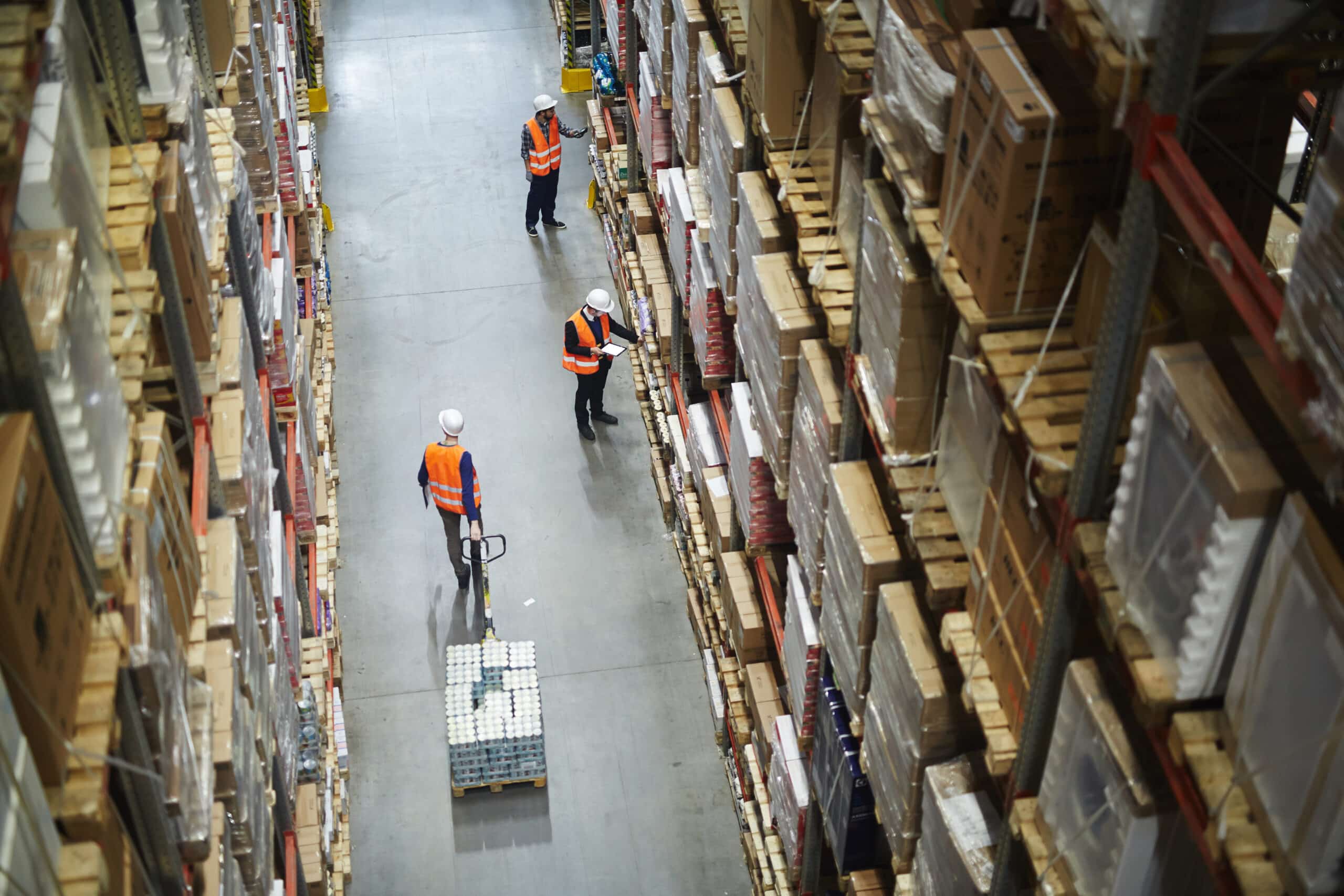The global supply chain is a complex system that involves a network of suppliers, manufacturers, and distributors, and it’s the driver of global trade and economic activity today. Despite how essential this system is, many supply chain risks are present, which every entity within the supply chain needs to be prepared to navigate.
What are some of the common supply chain risks? Unpredictable consumer behavior, production issues, cyber attacks, and natural disasters can all disrupt operations, delay production, compromise data, and ultimately impact both a company’s bottom line and the consumer experience.
The key to navigating supply chain risks is to proactively understand the most common risks and to take steps to avoid them and minimize their impact.
Understanding Supply Chain Risks
Supply chain risk refers to any event or situation which disrupts the smooth flow of goods or services, or compromises the security or outcomes of businesses or their customers. These risks can have cascading effects, which vary depending on the type of risk. For example, they can lead to delays, higher costs, or damage to a company’s reputation.
The potential impact of supply chain risks can be significant, and there are two main types of risks you should be aware of:
1. Internal risks
Internal risks originate within an organization’s operation, and companies usually have a fair degree of ability to control or mitigate these issues. These can include:
- Production delays: Delays in manufacturing or production processes that occur due to things such as equipment breakdowns, shortage of materials, or workforce issues.
Inefficiencies: Poorly designed processes, lack of automation, or inadequate employee training. - Quality issues: Issues related to the quality of products or materials, leading to defects, recalls, or customer complaints.
- IT failures: System outages or data breaches can delay operations and compromise sensitive information.
- Inventory management problems: Inaccurate inventory forecasting, overstocking, or understocking, which can lead to excess holding costs, missed sales opportunities, and delays in delivery to customers.
2. External risks
These stem from outside of your organization and include:
- Economic conditions: Market fluctuations, recessions, inflation, and consumer buying habits can all impact demand, pricing, and profitability. One study found that 71% of global companies cite raw material costs as their top supply chain threat.
- Supplier issues: Shortages, delays, labor issues, or any problem with your suppliers that impact distribution or functionality.
- Natural disasters: Inclimate weather, floods, and even situations such as the coronavirus pandemic can lead to supply chain disruptions, delays in inventory, increased transportation costs, and loss of inventory.
- Geopolitical instability: Trade issues, economic policies, and geopolitical tensions can impact international trade, regulations, and tariffs.
Research shows us that overall, the leading causes of supply chain risk are economic uncertainty, inflation, and shortages of raw materials, while cyber risks are believed to have the deepest impact. By understanding these and other risks, businesses can take steps to improve resilience, stay vigilant, and adapt their risk management strategies to
Strategies for Navigating Supply Chain Risks and Building Resilience
To reduce the impacts of supply chain risks and build resilience in your organization, here are some steps you can take:
1. Understand the potential risks your organization faces
The first step to managing supply chain risks and building resilience is to understand the potential risks your organization faces. You can use the list above as a starting point, and walk through each point, determining what each risk might look like in your organization. For example, you can outline all of your suppliers, production habits, and inventory management practices.
You might also be particularly vulnerable to other supply chain risks which we didn’t cover here. Are you facing unique staffing challenges? How is your technological infrastructure? Taking a proactive approach to risk identification allows you to develop a plan.
2. Evaluate your deficiencies
After getting a handle on the common supply chain risks your organization might encounter, you should audit your organization’s specific vulnerabilities. This is where you assess your organization’s resilience, and determine where deficiencies lie. For example, are you lacking adequate demand forecasts or inventory analytics to inform accurate buying habits?
To conduct this evaluation, you can assess your organization’s processes, systems, and protocols. Also, you can take both employee and customer feedback into account. If you notice patterns in feedback (such as recurring delays in delivery times) this might reflect an area that can be improved.
3. Strengthen your inventory management practices
Next, look to strengthen your organization’s inventory management practices. The way your business manages inventory is the bedrock of resilience and can help your organization be best prepared for risk. For example, if you’re using accurate demand forecasts to inform your ordering, you’ll always have the right amount of stock on hand. Similarly, if you’re leveraging powerful inventory analytics, you’ll have real-time insights into the state of your inventory, including what you’re out of and your most important items.
To strengthen inventory management practices, deploy safety stock strategies to ensure you always have enough inventory on hand, and that you’re prepared to weather unexpected delays or shortages. Also, utilize forecasting techniques to help anticipate demand fluctuations and optimize inventory levels. Lastly, consider integrating new supply chain technology to enhance visibility and improve forecast accuracy.
4. Diversify suppliers (and solidify relationships)
Diversifying your supplier base reduces your dependency on a single source, which can mitigate the risk of supplier-related disruptions. Establish relationships with multiple suppliers (especially for your most critical materials or components), to ensure you have a backup plan if a supplier encounters problems.
Also, with all of your suppliers, you should seek to solidify and deepen your relationships. Communication and collaboration with suppliers is key, and you should seek to strengthen relationships by fostering open communication, transparency, and trust. When this is the case, information about potential issues and risks will be freely shared, and you’ll be able to work collaboratively to find innovative solutions.
5. Plan for different scenarios
Instead of waiting for a crisis to hit, develop contingency plans that detail alternative solutions for various disruption scenarios. Start by conducting scenario-planning exercises, to assess and anticipate potential supply chain risks and their impact on your business. You can develop different plans for potential risk events, and have predefined actions in place, to facilitate quick and tactical action if something does occur.
6. Invest in supply chain technology
Leveraging technology such as supply chain planning tools, predictive analytics, and real-time tracking systems can enhance visibility and accuracy, allowing you to actively monitor your operations and make strategic decisions. Look for ways to integrate intelligent technology into your operations, or upgrade technology which is outdated. For example, you can implement advanced forecasting algorithms, predictive modeling tools, and supply chain planning suites to identify patterns and proactively manage supply chain disruptions.
Ultimately, with the right technology in place, you’ll be able to monitor inventory levels, track shipments, and identify potential bottlenecks or disruptions before they escalate to major problems.
StockIQ: Your Key to Navigating Supply Chain Risks
Supply chain risks come with the territory, and every business in this space needs to be prepared to navigate both internal and external risks. And while risk is unpredictable, the best way to prepare your business is by increasing visibility and improving ordering accuracy. For this, you can turn to StockIQ.
StockIQ is an intelligent supply chain planning suite that knows what you need to run efficiently and to help your organization improve its resilience. You’ll have access to accurate forecasts which help you reduce inventory levels, while providing unmatched service to your customers and shippers.
Find out how StockIQ can help you navigate and minimize supply chain risks by contacting us today.

